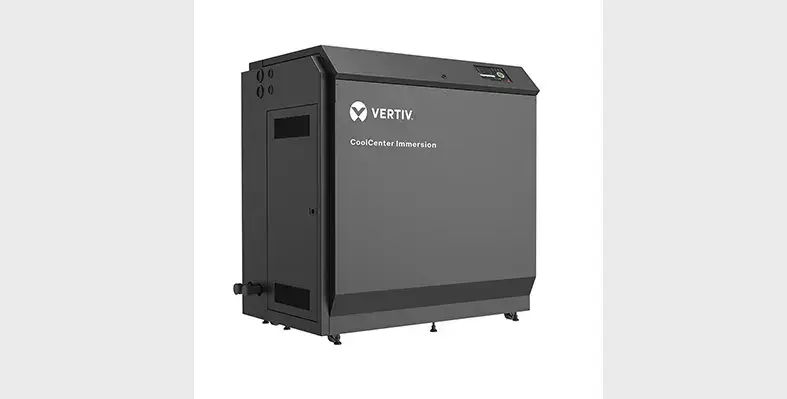The telecom vendor space has gone through a flurry of M&A activity in recent years, driven by activist shareholders and private equity funds focusing on balance sheet re-capitalization, OPEX optimization and portfolio/customer synergies
Furthermore, factors such as greater scale (the key to attain more efficient cost structures), TAM expansion (and a faster time-to-market by the acquirer) and distressed asset opportunities have also contributed to this consolidation trend.
The uptake in telecom M&A can also be measured by variables such as industry concentration. Not surprisingly, the Herfindahl–Hirschman Index (HHI) has risen from 1,600 to nearly 2,300 over the past decade, which also coincided with a series of mergers (Alcatel-Lucent, Nokia-Siemens) and distressed asset sales (Ericsson’s purchase of Marconi and Nortel’s wireless business). However, the emergence of the Asian Tigers (Huawei and ZTE) has subdued the increase in market concentration, making it a bit less noticeable.
Scale and execution have become critical success factors as the telecom industry is disrupted by the advent of new paradigms such as Software Defined Networking (SDN) and Network Function Virtualization (NFV), with vendors seeking to either arrange a buy-out or partner, as witnessed by the recent Cisco/Ericsson alliance. This brings us to the Nokia acquisition of Alcatel-Lucent, and Monday’s announcement by the Finnish vendor that it has finally gained a de-facto control of its French counterpart Alcatel-Lucent after its US$17bn all-share offer.
The NOK/ALU merger has been discussed as a possibility since the days of Nokia Siemens Network (NSN), given the companies’ geographic revenue breakdown synergies and the mostly complementary nature of their product portfolios. This possibility of a combination of the two companies started getting more attention since the Mobile World Congress of 2014, when rumors were circulated that execs had been meeting each other over some tapas in Barcelona to explore such an option.
Nokia’s strides on margin and cash flow, coupled with Alcatel-Lucent’s successful execution of its SHIFT plan, have enabled the dream to become a reality. But before that, Nokia had to earn all regulatory approvals, first from the US and finally last October from France. The negotiations at the highest level (between Nokia’s CEO Rajeev Suri and France’s Minister of Economy, Industry and Digital Affairs Emmanuel Macron) proved to be quite challenging and Nokia had to agree to several caveats required by the French government, such as placing ALU’s French facilities at the forefront of key future technology research programmes in the new entity. Moreover, Nokia also has to keep backing a number of French government technology initiatives that Alcatel-Lucent is currently engaged in, such as the 'Industry of the Future' programme, the funding of academic tuition and the placement of leading technology experts at the French facilities.
Merger Rationale
The rationale for the Nokia/ALU fusion can be summed up in a few key points:
Annual synergies of US$973.5mn, a conservative Nokia target in our view. We believe that cost savings alone can easily exceed the US$2bn mark, mostly in wireless R&D, OPEX gains from regional overlap and COGS savings from larger procurement scale and manufacturing. Adding that to revenue synergies of US$324.5mn and revenue dis-synergies of US$649.3mn yields a combined total target of US$1.9bn, which is twice the stated Nokia goal.
Complementary product portfolios – except from some overlap in wireless (where despite that, the newly combined entity would capture the number 2 position in the total global RAN market, eclipsing Huawei and only below Ericsson, and the leading position in 4G/LTE RAN), Nokia also stands to gain in areas such as VoIP/IMS (second overall only behind Huawei), routing (number three overall and gaining share), and optical (second only to Huawei). We provide more details on areas such as backhaul, routing and SDN below. The new Nokia will have quite a balanced, best-of-breed, all-encompassing product portfolio that can be leveraged to increase the share of carriers’ CAPEX in the coming years, as depicted in Exhibit 1. This puts the new company at par with its main competitors (Ericsson and Huawei) in terms of total operator share of wallet, enabling it to stay at the leading edge in technology R&D (pre-synergy R&D budget as big as Cisco and about 10-percent larger than Ericsson).
Geographic fit – as depicted in Exhibit 2, the new Nokia will have a pretty even revenue split between North America (30 per cent), Europe (27 per cent), and APAC (28 per cent), with MEA (eight per cent) and CALA (7 per cent) making up the rest (based on combined 2014 revenues in each company’s annual report). This is a direct result of Nokia’s strong presence in Europe (30 per cent of 2014 stand-alone regional revenues) and APAC (37 per cent of 2014 stand-alone regional revenues) and Alcatel-Lucent’s North American strength (44 per cent of 2014 stand-alone regional revenues).
Potential Impacts
From an OPEX and COGS perspective, wireless R&D savings by themselves can be close to approximately US$865.3mn. Nokia Networks has a superior portfolio (e.g. Liquid RAN, Single RAN, 5G trials, etc.) and there is quite a bit of duplication with ALU’s radio R&D. Assuming a 70 per cent cut in the overlap is reasonable (leaving the rest to support legacy technologies such as CDMA in North America) results in a savings of US$838.7mn.
The new entity will also have 35 global R&D sites (24 for ALU and 11 for Nokia), a total that can be potentially shaved off particularly in countries with a big overlap, such as China, Germany, Poland and the US. The exception to this is developed Asia (Japan & South Korea) and India, where Nokia’s presence is strong and ALU’s is weak.
Over time, Nokia and Alcatel-Lucent had been selling sites to EMS/manufacturing partners, converting fixed manufacturing costs into variable ones. The two companies will initially own a total of 11 manufacturing sites, and it is likely that this total can be lowered specially in China where there are a combined total of five sites.
In terms of revenue synergies, from a backhaul standpoint, Nokia currently OEMs microwave backhaul infrastructure from Dragonwave, but will gain a great offering from ALU in this area. In the routing domain, Nokia has been a Juniper reseller, at an average annual volume of US$216mn. Over time, this will create an opportunity for sales of Alcatel-Lucent’s IP routers, with Nokia selling them into its own installed base. Juniper also stands to lose in the SDN arena, where Nokia was bidding Juniper’s SDN Contrail gear and now will count with ALU’s own SDN “spin-in”, Nuage Networks.
However, the above efficiencies have to be counterweighed with revenue “dis-synergies” arising from the merger, which usually result in certain occurrences such as a carrier which previously dual-sourced its network infrastructure from both vendors (i.e. NOK and ALU) and now has to find a new player so that it no longer places all of its eggs in a single basket. This situation is likely to mainly happen in China, with Chinese mobile operators reweighting their share of CAPEX wallet between Ericsson (10 per cent of 4G) and the combined new company (10 per cent each for a total of 20 per cent).
The Final Word
Big mergers in the telecom industry are often quite complex to be successfully executed. As John Chambers, ex-Cisco CEO and the company’s current Executive Chairman so eloquently put it, in the aftermath of the Cisco/Ericsson partnership deal announcement:
"This industry is about growth, innovation and speed. If it takes six months to get through a regulatory board and then another year to combine … this industry will be won and lost in the next three years, so it is all about speed about how you go about it. While we are a huge believer in big-to-small and big-to-medium acquisitions, partnerships, if you can do them, are the way to go large-to-large. Joint ventures add an extra level of complexity, you have an over-riding group, a board, and that slows you down."
Interestingly enough, Nokia (Nokia-Siemens) and ALU (Alcatel-Lucent) already have each tried its own “mega-merger” and somewhat disappointed in the post-M&A execution. So will this be a case of third time lucky? We will know the answer in about two years. Rajeev Suri will unquestionably have quite a challenge at his hands. But the early indicators are that, given Nokia’s recent robust profitability, its conservative cost efficiency goal and other operational synergies, the combined company will be giving Ericsson and Huawei quite some competition.
Ronald Gruia, director for Emerging Telecoms at Frost & Sullivan.
























